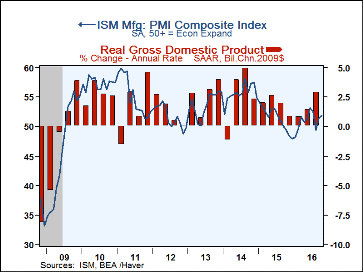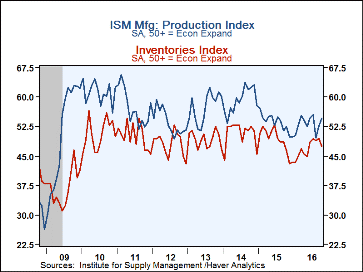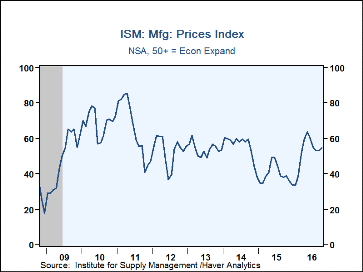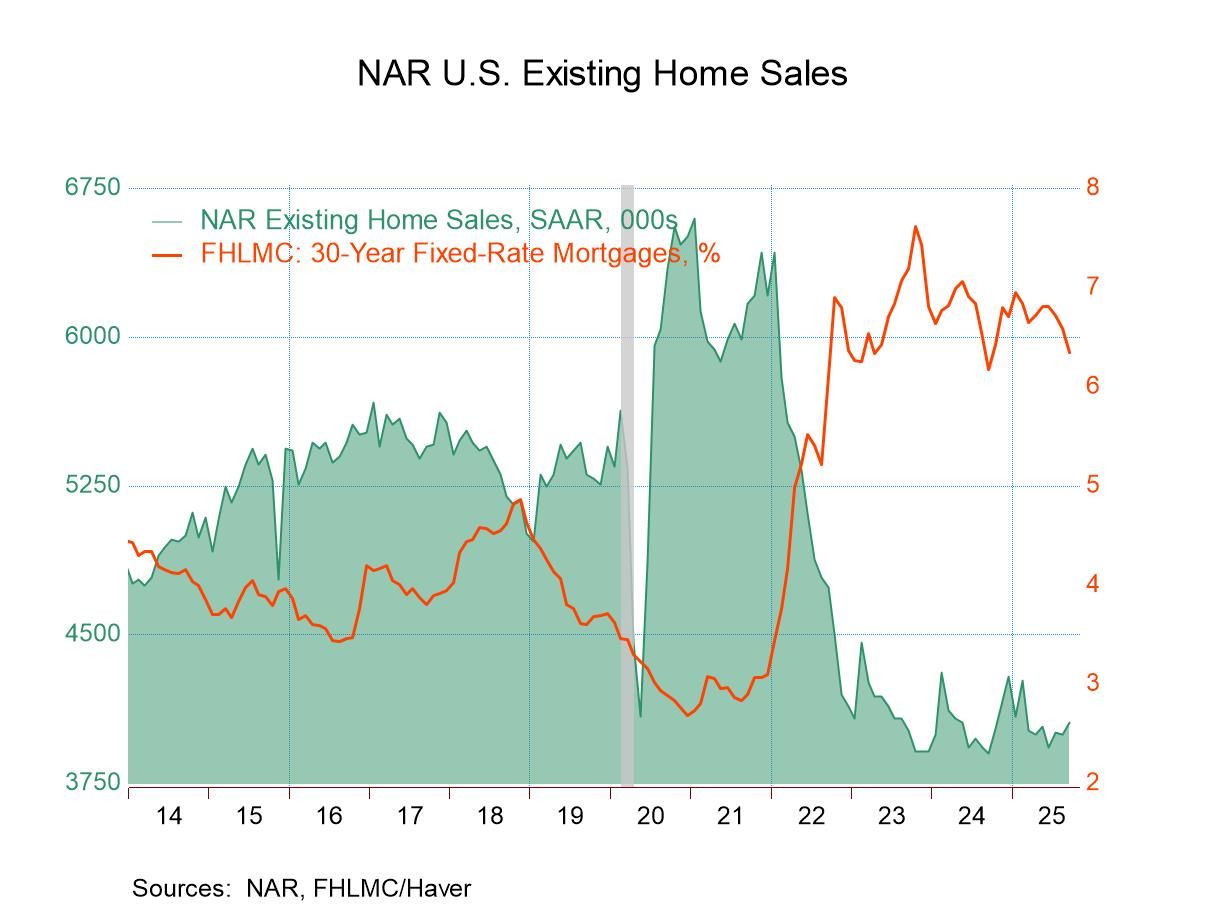 Global| Nov 01 2016
Global| Nov 01 2016ISM Manufacturing Index Nudges Higher; Prices Improve
by:Tom Moeller
|in:Economy in Brief
Summary
Factory sector activity continued to improve during October. The ISM composite index of factory sector activity rose to 51.9 from an unrevised 51.5 in September. It was the seventh month this year when the index was above break-even. [...]
Factory sector activity continued to improve during October. The ISM composite index of factory sector activity rose to 51.9 from an unrevised 51.5 in September. It was the seventh month this year when the index was above break-even. The latest figure compared to an expected 51.7 in the Action Economic Forecast Survey. During the last ten years, there has been a 75% correlation between the index level and the q/q change in real GDP.
Performance amongst the component series was uneven. Production rose moderately, and recovered two months of decline. The employment index increased above 50 for the first time since June. During the last ten years, there has been an 88% correlation between the index level and the m/m change in factory sector payrolls. The higher supplier delivery index suggested the slowest product delivery speeds since June. To the downside was the new orders index which gave up half of its September increase. Continued inventory decumulation was suggested by the index falling to the lowest level since May.
The separate prices paid figure strengthened to 54.5, up from 53.0 during the prior two months. It remained below, however, the May high of 63.5. Twenty-five percent (NSA) of respondents reported paying higher prices while 16 percent paid less.
Amongst the other ISM series, the export index improved slightly to 52.5 and remained up versus the February low of 46.5. The imports index increased to 52.0, the highest level in three months. The order backlog index reversed its September gain.
The ISM figures are diffusion indexes where a reading above 50 indicates increase. The figures from the Institute for Supply Management can be found in Haver's USECON database. The expectations number is in Haver's AS1REPNA database.
| ISM Mfg (SA) | Oct | Sep | Aug | Oct '15 | 2015 | 2014 | 2013 |
|---|---|---|---|---|---|---|---|
| Composite Index | 51.9 | 51.5 | 49.4 | 49.4 | 51.3 | 55.6 | 53.8 |
| New Orders | 52.1 | 55.1 | 49.1 | 50.8 | 52.6 | 58.9 | 56.8 |
| Production | 54.6 | 52.8 | 49.6 | 52.5 | 53.5 | 59.2 | 57.5 |
| Employment | 52.9 | 49.7 | 48.3 | 47.7 | 51.0 | 54.4 | 53.1 |
| Supplier Deliveries | 52.2 | 50.3 | 50.9 | 49.7 | 50.7 | 55.0 | 51.9 |
| Inventories | 47.5 | 49.5 | 49.0 | 46.5 | 49.0 | 50.8 | 49.4 |
| Prices Paid Index (NSA) | 54.5 | 53.0 | 53.0 | 39.0 | 39.8 | 55.6 | 53.8 |
Tom Moeller
AuthorMore in Author Profile »Prior to joining Haver Analytics in 2000, Mr. Moeller worked as the Economist at Chancellor Capital Management from 1985 to 1999. There, he developed comprehensive economic forecasts and interpreted economic data for equity and fixed income portfolio managers. Also at Chancellor, Mr. Moeller worked as an equity analyst and was responsible for researching and rating companies in the economically sensitive automobile and housing industries for investment in Chancellor’s equity portfolio. Prior to joining Chancellor, Mr. Moeller was an Economist at Citibank from 1979 to 1984. He also analyzed pricing behavior in the metals industry for the Council on Wage and Price Stability in Washington, D.C. In 1999, Mr. Moeller received the award for most accurate forecast from the Forecasters' Club of New York. From 1990 to 1992 he was President of the New York Association for Business Economists. Mr. Moeller earned an M.B.A. in Finance from Fordham University, where he graduated in 1987. He holds a Bachelor of Arts in Economics from George Washington University.










